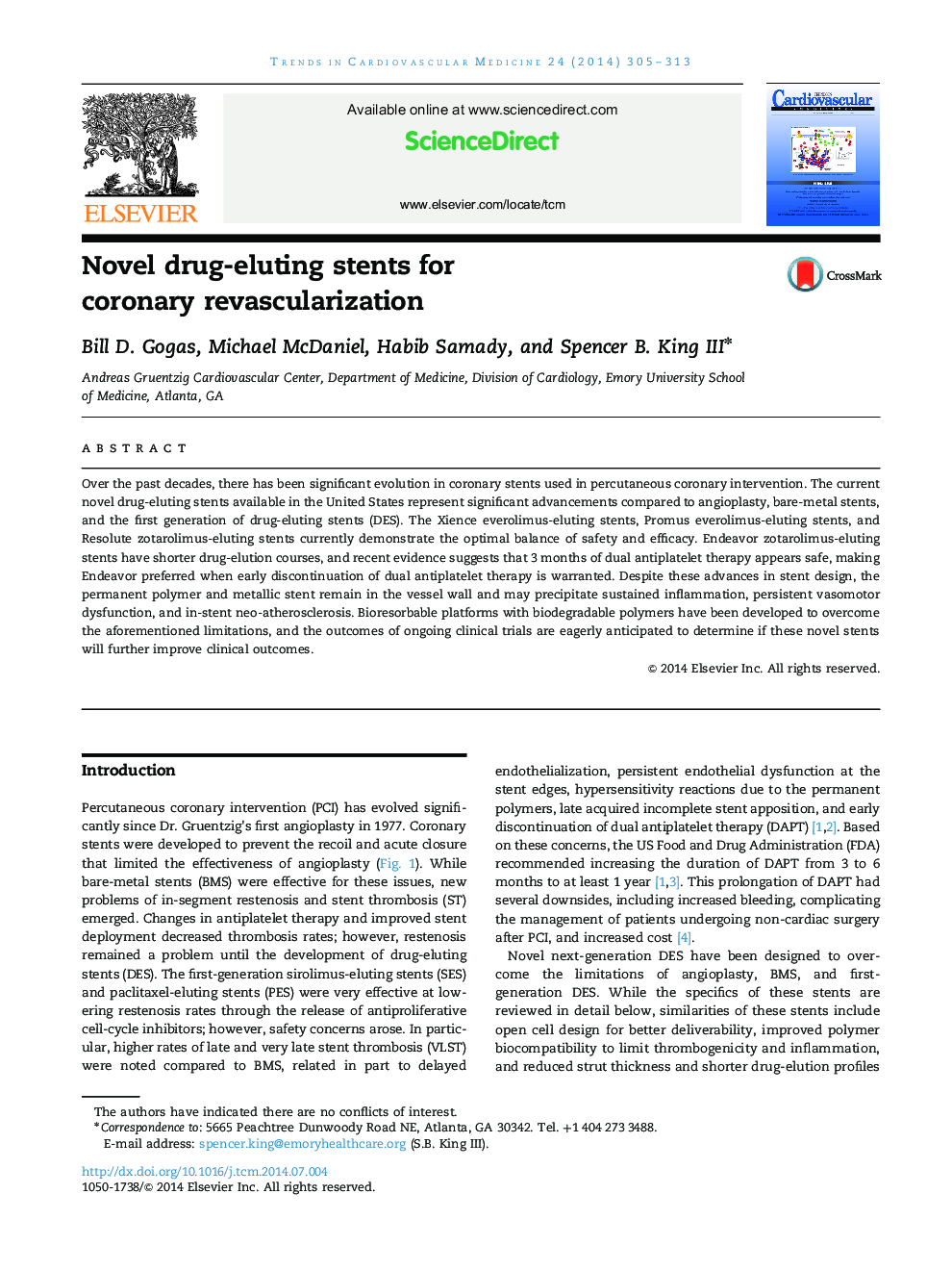| Article ID | Journal | Published Year | Pages | File Type |
|---|---|---|---|---|
| 3031677 | Trends in Cardiovascular Medicine | 2014 | 9 Pages |
Over the past decades, there has been significant evolution in coronary stents used in percutaneous coronary intervention. The current novel drug-eluting stents available in the United States represent significant advancements compared to angioplasty, bare-metal stents, and the first generation of drug-eluting stents (DES). The Xience everolimus-eluting stents, Promus everolimus-eluting stents, and Resolute zotarolimus-eluting stents currently demonstrate the optimal balance of safety and efficacy. Endeavor zotarolimus-eluting stents have shorter drug-elution courses, and recent evidence suggests that 3 months of dual antiplatelet therapy appears safe, making Endeavor preferred when early discontinuation of dual antiplatelet therapy is warranted. Despite these advances in stent design, the permanent polymer and metallic stent remain in the vessel wall and may precipitate sustained inflammation, persistent vasomotor dysfunction, and in-stent neo-atherosclerosis. Bioresorbable platforms with biodegradable polymers have been developed to overcome the aforementioned limitations, and the outcomes of ongoing clinical trials are eagerly anticipated to determine if these novel stents will further improve clinical outcomes.
